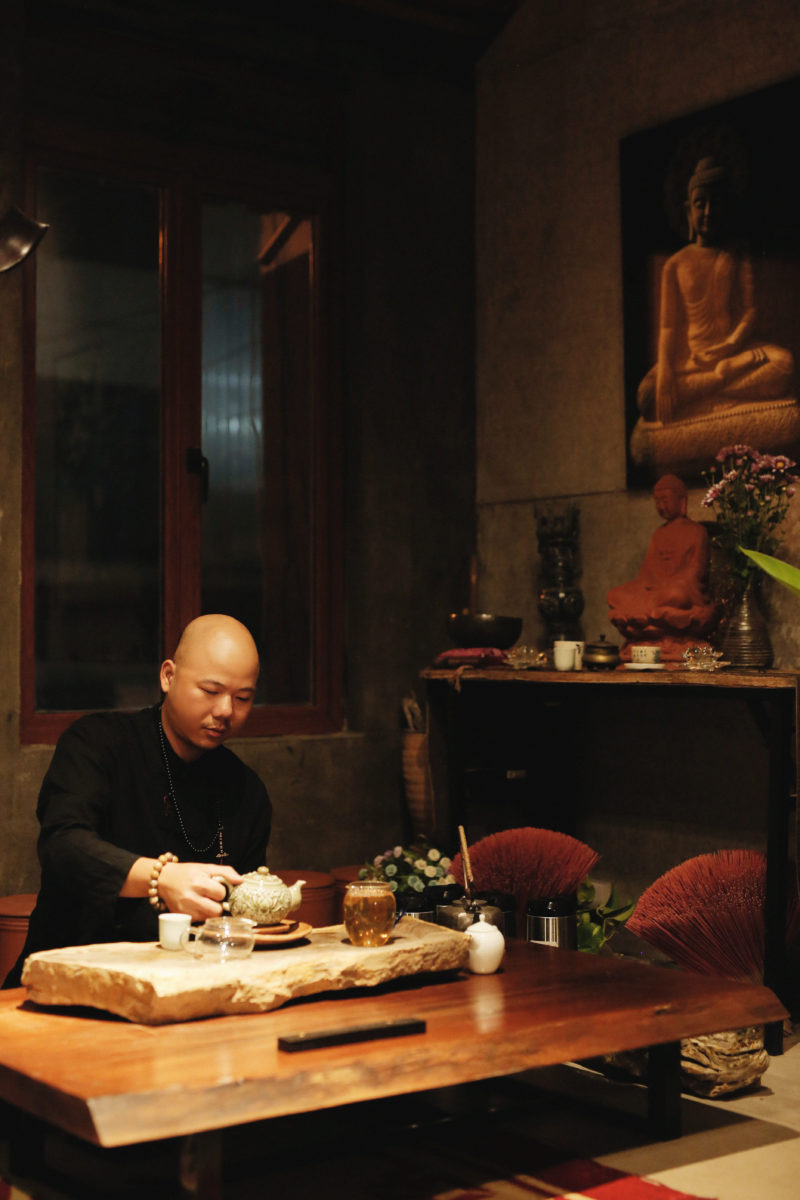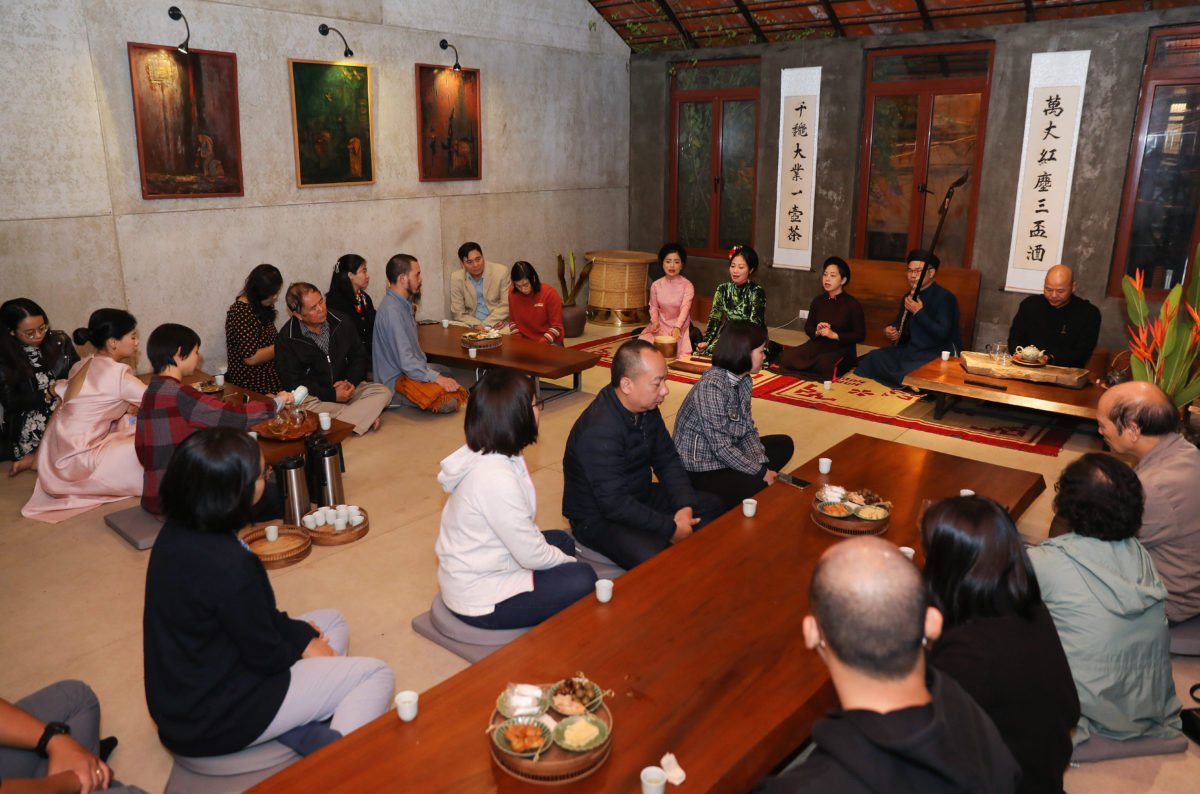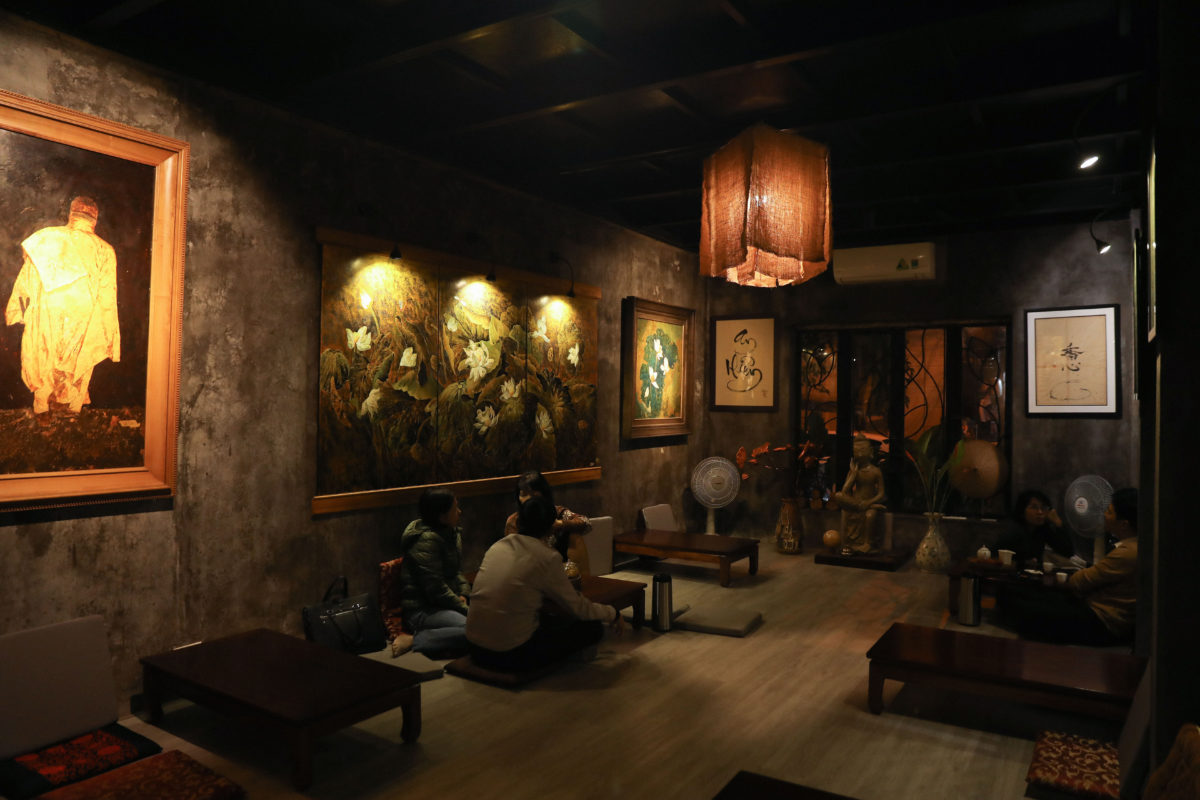
“There are nights when the full moon is clear, and the golden light radiates like a warm forest. The ancient tea trees lit up magically, their warm, sweet fragrance mixed with a little bit of night incense… We would love to capture that magical moment through the tea which holds in it a feeling of mystery, something shrouded in the darkness.” – Nguyen Viet Hung.
Interview and story by John Bickel
Hien Minh, a Hanoi-based tea café and shop, recently won a gold medal in the AVPA Teas of the World contest for its forest-origin black tea entry. The owners, Mr. Nguyen Viet Hung and his wife, Vu Yen, are committed to protecting, nurturing, and hand-processing high-quality Vietnamese tea from ancient tea trees.
Congratulations on earning a gold medal in the AVPA Teas of the World contest. What led you to submit your teas for evaluation? Why do you feel this recognition will be helpful?
We like this new creation from this spring season, 2022, so we are happy to know how the international judges comment on and evaluate it. This recognition will help define one direction of the world tea trend. It is very important to us to know how international guests warmly welcome our tea in addition to local acceptance.
What makes this tea distinctive and special, including where it was grown and processed?
This tea was made from ancient tea trees (over 100 years old) that were naturally growing in the Ha Giang mountains. The tea material was picked from the first flush in the spring season and was processed like a fine red tea type. After picking, the tea sprouts were withered in the shade for about three days and then “massaged” totally by hand, many times, with rest between the processing steps. The heat from our hands and the tender bruises from the massage made the sprouts slowly oxidize and transform. Then, dry and return the tea to a vase about seven times between processing steps to finish the tea.
There are nights when the full moon is clear, and the golden light radiates like a warm forest. The ancient tea trees lit up magically, the warm, sweet fragrance and a little bit of night incense. The surrounding space seemed to thicken every time the moon slipped through the clouds and flared up full of pride. We would love to capture that magical moment through the tea, which holds a feeling of mystery, something shrouded in the darkness. Similarly, this red tea has much to discover hidden within its complex flavors and aromas.
Vietnam is transitioning from commodity teas to more sophisticated single-origins like the teas you offer. Will you share your thoughts about tea cultivation, sustainability, environmental stewardship, and innovations in production techniques and styles?
More tea artisans have recently focused on making high-quality teas in the Vietnamese market. This will help the world know more about Vietnamese tea and tea culture. The lives of people who planted and cared for the tea trees would also become better and more sustainable when the tea trees have more value. The Snow Shan variety, especially the ancient tea trees up high mountains in the country’s North, produce a high-lighted variety of specialty teas with great potential. This also brings challenges and inspiration to exploring and creating a unique taste for teas for all tea makers.
High-Quality Tea Production
These answers are only a starting point for their perspective on tea and their approach to helping develop and share tea culture in Vietnam. Mr. Nguyen Viet Hung and his wife, Vu Yen, have operated a shop and café in Hanoi for the past seven years.
A major turning point for them was being awarded first place for tea preparation in a 2016 local Tea Master’s competition. In that event, their lotus green tea was prepared. A signature of the Vietnamese tea industry, one Hien Minh specializes in producing.
Mr and Mrs Viet Hung also own and operate a small production center in the mountains of the Ha Giang tea-producing region. It’s a small operation that sources good-quality local material from producers. Most processing steps are completed by hand, in contrast with more standard and higher-volume machine production.
The processing for their lotus tea involves sourcing 30 to 40 kg of flowers per season from five lotus ponds, all to produce a limited quantity of tea. They make and sell traditional green tea, as well as red (black) and white (silver needle) versions, using 2000 flowers to produce every kg of lotus tea.
They also produce sheng and shu pu’er (or “pu’er-style” tea, depending on how one uses terms), red (black) tea, green tea, and oolongs, even an “oriental beauty” style. Of course, the versions relate to other styles produced in different places, which they adjust and interpret based on what works best with material produced locally, and tied to locally evolving tea styles.

Developing & Sharing Vietnamese Tea Culture
They take a pragmatic and organic approach to tea production, presentation, and personal consumption. Hung explained that Vietnamese culture included older ceremonial tea brewing practices, royal and monastic meditative forms, and daily practices. It is somewhat similar to Chinese Gong Fu ceremonial brewing. Many people in their local industry have also been developing and evolving local formal practices over the past decade or longer.
Their approach embraces simplicity, engagement with nature, focus on internal experience, and emphasis on socially sharing the tea experience by drinking tea with others. This doesn’t involve copying or expanding on Chinese or other foreign tea traditions; being present and mindful during the experience is emphasized instead. Buddhism and Taoism aren’t direct inputs, but based on influence from an uncle involved with tea production and Zen study and practices (Hoang Anh Suong, an author on religion and philosophy), they have come to integrate these themes.
This emphasis on simplicity is part of traditional Vietnamese tea consumption practice. In the past, fresh, unprocessed tea leaves were brewed in large clay vessels and prepared without the use of limited-duration infusion times. In updated forms, this can relate to a longer brewing time approach with processed green tea, either moderated in intensity by limiting tea material or drunk strong.

The Evolution of Tea Tradition
It adds up to a complex story about layers of tea tradition evolving together, emphasizing simplicity, local culture, and organic development. More recent aspects relate to developing new tea styles and experimentation with aging teas. That exploration is a work in progress, but beyond aging sheng and shu, they’ve found that transition results can be positive with a range of more oxidized oolongs and less completely oxidized red (black) teas.
More of their story is told through information about types and background on their website and blog, and in a Youtube channel that demonstrates tea brewing practices and production areas and processes.